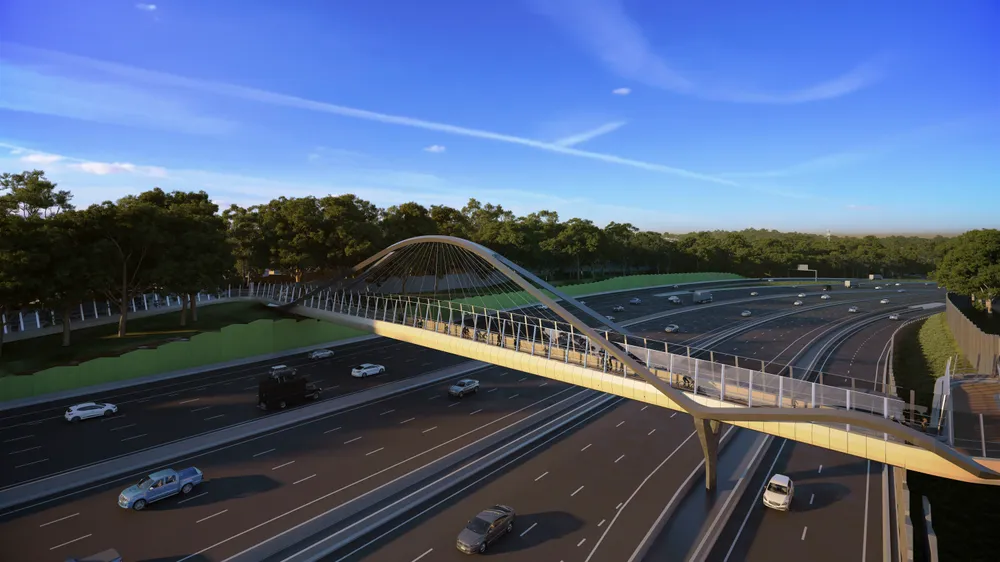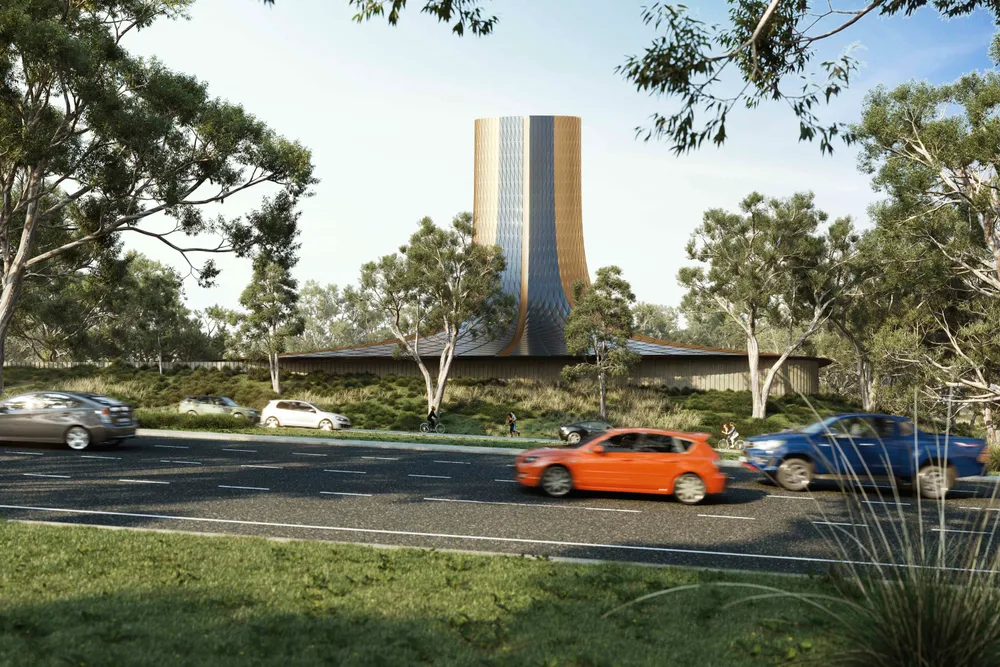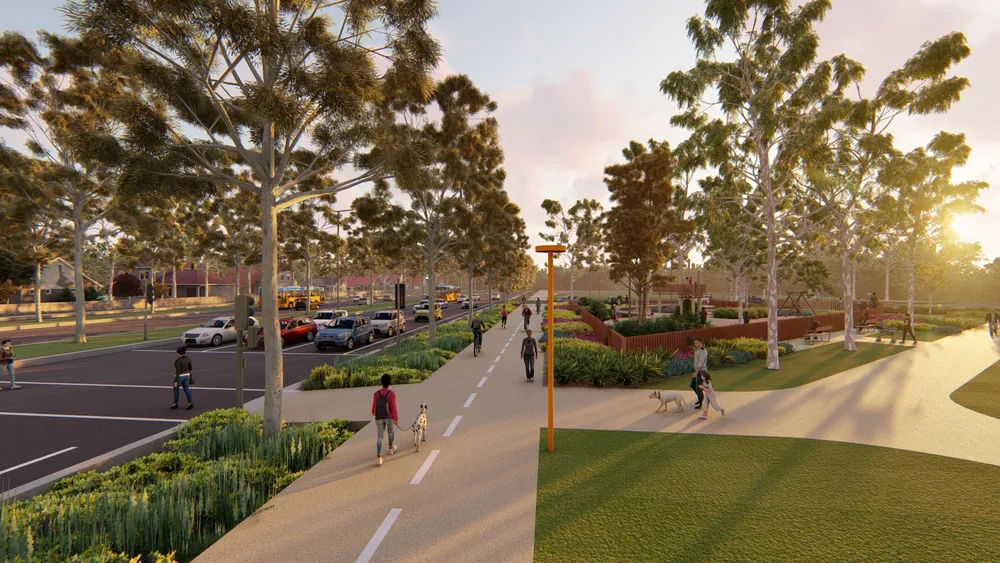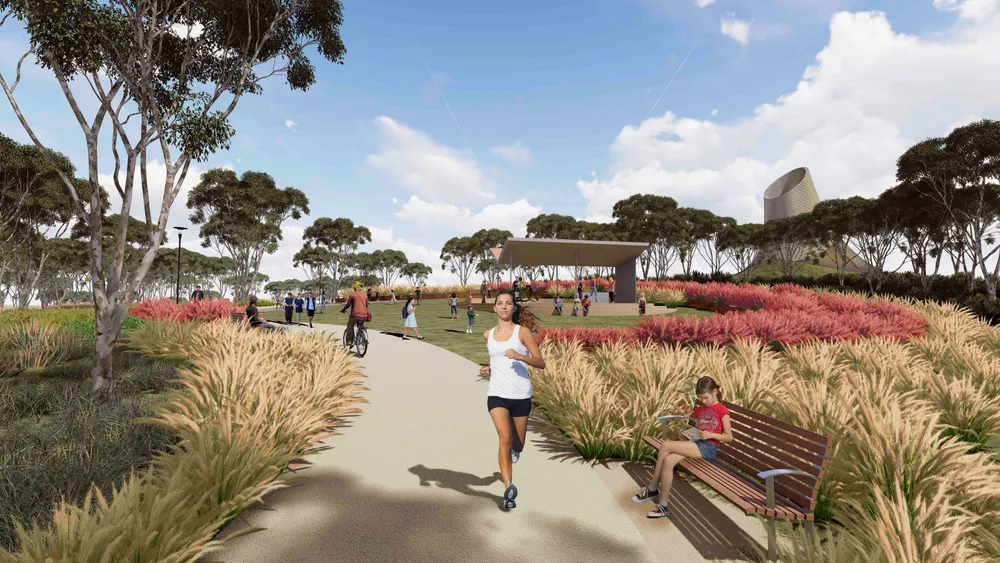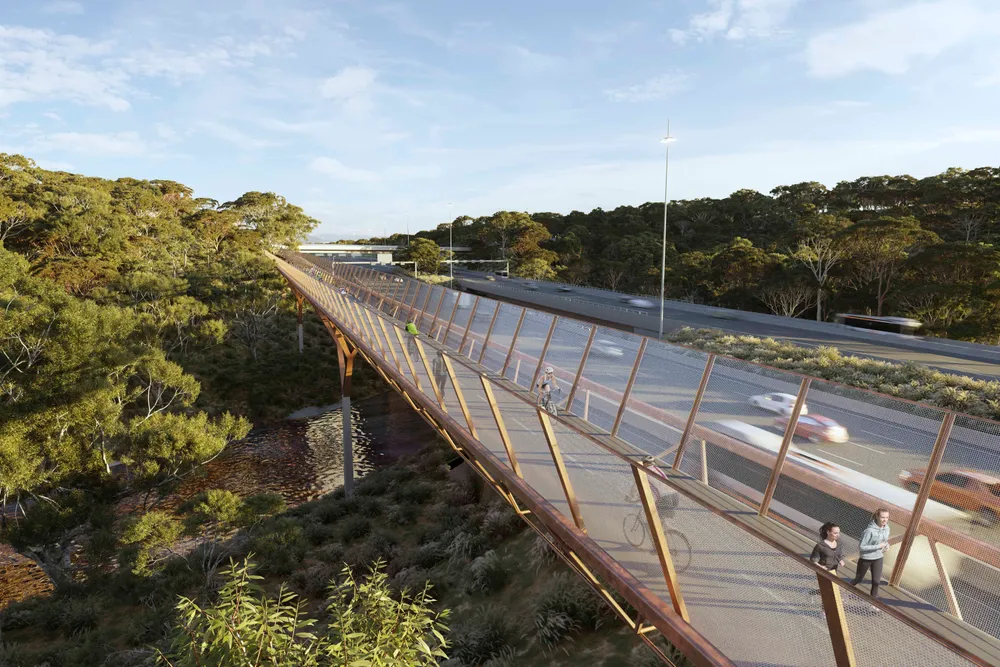NewsStudio
Integrated design consortium creates winning outcome for the North East Link project
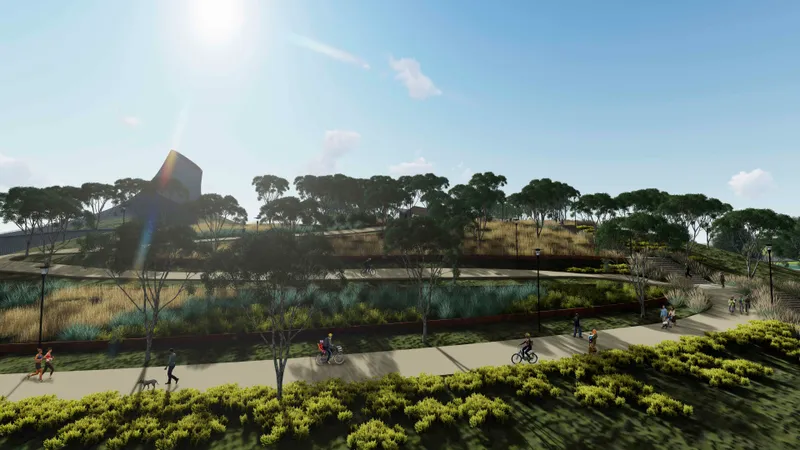
A specialist design consortium – comprising Warren and Mahoney, BKK, T.C.L, and Indigenous design experts, Greenaway Architects – collaborated as part of the SPARK Consortium to design the winning response for the newly-approved North East Link Project.
The collective of architectural experts developed integrated transport and urban design solutions that will make travel faster and easier – connecting more people to employment, education, community and opportunity. The proposed design also employs the thinking of First Nations People and leading sustainability innovations.
In consultation with Wurundjeri (Woi-Wurrung Cultural Heritage Aboriginal Corporation), three core pillars – Connection to Country, Caring for Country, and Connecting People – guided the project and team approach. Through applying these core pillars at every stage of the project, the team sought to create an enduring legacy.
Sustainable practices were front of mind in the design of NELP. The project will intentionally ‘touch the earth lightly’ by optimising structural elements to reduce the volume of materials and embodied carbon, cultivate more green spaces, positively impact the natural waterways and resources, and create new parklands and public spaces for the community to connect.
Key benefits developed through the integrated design approach include:
1. Longer Tunnel By lengthening the NELP tunnel, it helps create connected, vibrant communities and a leafy Greensborough Boulevard. The 6.5km tunnel will also provide significant opportunity for sustainability innovation. New green spaces will be activated above the tunnel path, and a new land bridge over the southern portal will link the ecologies of the Yarra River and the Koonung Creek.
2. Cultural expression The design team recognised the enormous opportunity the NELP presented to recognise and celebrate shared history and cultural values. From the culturally significant Birrarung (Yarra River) for Wurundjeri, to Heide Museum of Modern Art, and the cherished village of Watsonia, places of connection and community have inspired and remained at the heart of this design.
3. Photovoltaic Noise Walls The proposed design showcases environmental sustainability leadership, with the potential to include one of the largest solar photovoltaic infrastructure applications in the world for a road project.
4. Three Land Bridges Generous landscaped bridges aim to connect different communities and create new parklands. The design of the project’s land and foot bridges are inspired by Indigenous artefacts; and will not only improve connectivity and liveability between suburbs, but also provide an enduring positive legacy for all Victorians conceived through the lens of First Peoples.
5. Revitalised Koonung Creek The project design reimagines waterways, pathways and parklands throughout the length of this linear habitat. The response specifically recommends a regenerative approach with Koonung Creek by employing ‘daylighting’ design techniques to improve water quality and support more biodiversity.
6. Simplified Manningham Interchange A smaller Manningham Interchange will enable the release of land for habitat, value-capture development, and the landmark Wurundjeri cultural precinct.
7. New Boulevard for Melbourne’s North-East A reimagined, tree-lined Greensborough Boulevard involving the planting of hundreds of new trees with integrated walking and cycling paths will transform this connection.
Overall, the design aims to enhance existing connections and provide new links to stitch communities together. The “whole-corridor” approach celebrates the unique characteristics of the Ridgeline, Yarra River Valley, and Koonung Creek Valley areas. It aims to protect, maintain and enhance North-East Melbourne through neighbourhood improvements, sensitive transitions to road infrastructure, enhanced open spaces, and more walking and cycling connections.
The Victorian State Government will now move forward with the construction of the project, which is expected to be completed by 2028.
